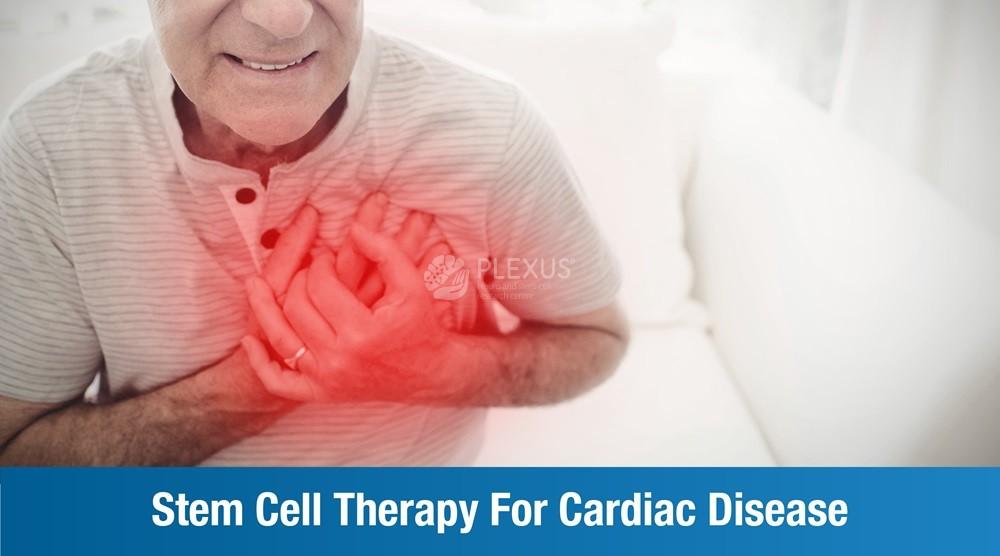
The advent of Cell therapy has changed the way we view cardiovascular medicine. Let’s take a look at the regenerative abilities of Cells, particularly mesenchymal Cells, and their transformative impact in the field of cardiac care.
What is Cardiac Disease?
Cardiac disease encompasses a broad range of conditions that affect the heart and blood and vessels, essentially the cardiovascular system. Some of these include:
- Coronary Artery Disease (CAD)
- Peripheral Artery Disease (PAD)
- Heart Failure
- Arrhythmia
- Valvular Heart Diseases
Cell Therapy for Cardiac Repair
The hallmark of Cell therapy lies in its ability to rejuvenate damaged hearts. In recent years, Cell therapy has emerged as a promising avenue of treatment in addressing as well as mitigating the effects of cardiac diseases. Here’s how:
Cardiac Tissue Regeneration
Mesenchymal Cells (MSCs) can differentiate into various cell types, especially cardiomyocytes. These are specialized cells of the heart. MSCs can contribute towards the repair and regeneration of damaged structures of the cardiovascular system.
Immune Response Modulation
Inflammation is a key feature of cardiac diseases. MSCs have immunomodulatory properties that can help regulate immune response, and thereby reduce inflammation. This is critical for the creation of a more conducive environment for the heart to heal and function.
Stimulation of Blood Vessel Growth
Through the process of angiogenesis, MSCs can stimulate the growth of new blood vessels. This is crucial for improving blood flow to the heart muscle. By promoting angiogenesis, MSCs can address underlying issues of cardiac diseases, such as coronary artery disease.
Improvement of Cardiac Function
Cells help improve cardiovascular function by contributing to the formation of healthy heart tissue that promotes contractility and the heart’s pumping capacity.
Reduction of Fibrosis
Formation of scar tissue is a common aftermath of heart diseases like myocardial infarction. This can deeply impact cardiovascular functioning. Cells help minimize fibrosis by contributing to the regeneration of healthy tissue, thereby preserving the structural integrity of the heart, and preventing further complications.
Cell Treatment for Cardiac Injury
Cardiac injury is any kind of damage to the heart muscle that can essentially compromise its function and structure. From scar tissue modulation to functional improvement, Cell therapy has significantly improved the lives of individuals grappling with cardiac injury. The above mentioned features of Cells also help manage the aftermath of cardiac injury.
Cells in Action
How do Cells navigate the intricate pathways of the circulatory system to reach damaged cardiac tissue? Let’s take a look at the step-by-step process below:
Introduction of Cells into the circulatory system (via IV)
↓
Integration of Cells into the bloodstream
↓
Chemotaxis – Detection of damaged tissues
↓
Secretion of cytokines and growth factors
↓
Interaction of vessel walls (margination and rolling)
↓
Adhering to endothelial cells
↓
Migration towards damaged tissue
↓
Integration into damaged tissue
↓
Regeneration of damaged tissue
Cell therapy represents a beacon of hope for individuals suffering from cardiac disease as well as their loved ones who witness them grappling with the condition. There are numerous clinical trials and research underway to prove the efficacy and Cells, and rebuild broken dreams and hearts.
FAQs
What is the best source of Cells for cardiac regeneration therapy?
Mesenchymal Cells derived from bone marrow or adipose tissue have the potential to differentiate into cardiac cells and promote tissue repair.
What is the most successful Cell therapy?
Mesenchymal Cell therapy has shown incredible success in various clinical trials, showcasing the effectiveness of MSCs in promoting tissue repair and reducing inflammation.
Can Cells reverse heart disease?
Cell therapy has shown promise in mitigating the effects of heart disease. MSCs have been known to promote cardiac tissue regeneration, improve heart function, and contribute to better overall cardiovascular health.
What is the stem procedure for the heart?
The first step is harvesting adult Cells or MSCs from the patient’s bone marrow or adipose tissue. Post isolation and processing, these cells are reintroduced into the heart, generally through intracoronary infusion or direct injection into the damaged cardiac tissue. The primary aim of Cell therapy for heart and cardiac diseases is to stimulate regeneration and enhance cardiac function.
Where are Cells Injected in the Heart?
Cells are commonly injected into the heart through intracoronary infusion (Cells are delivered through coronary arteries) or direct injection into the damaged tissue during cardiac procedures. Intracoronary infusion allows Cells to reach various areas of the heart. Direct injection targets specific regions of the heart that require regeneration.










